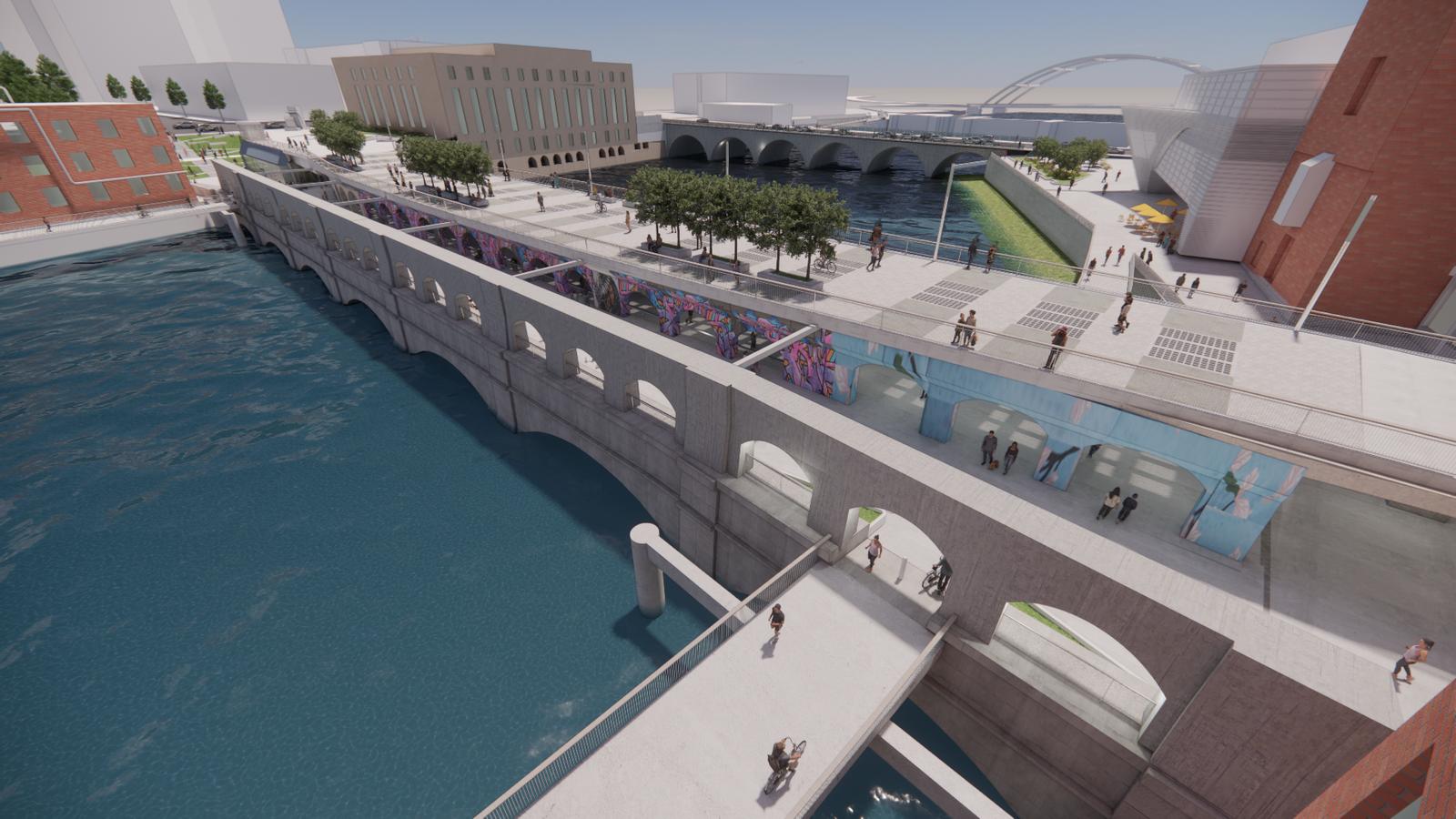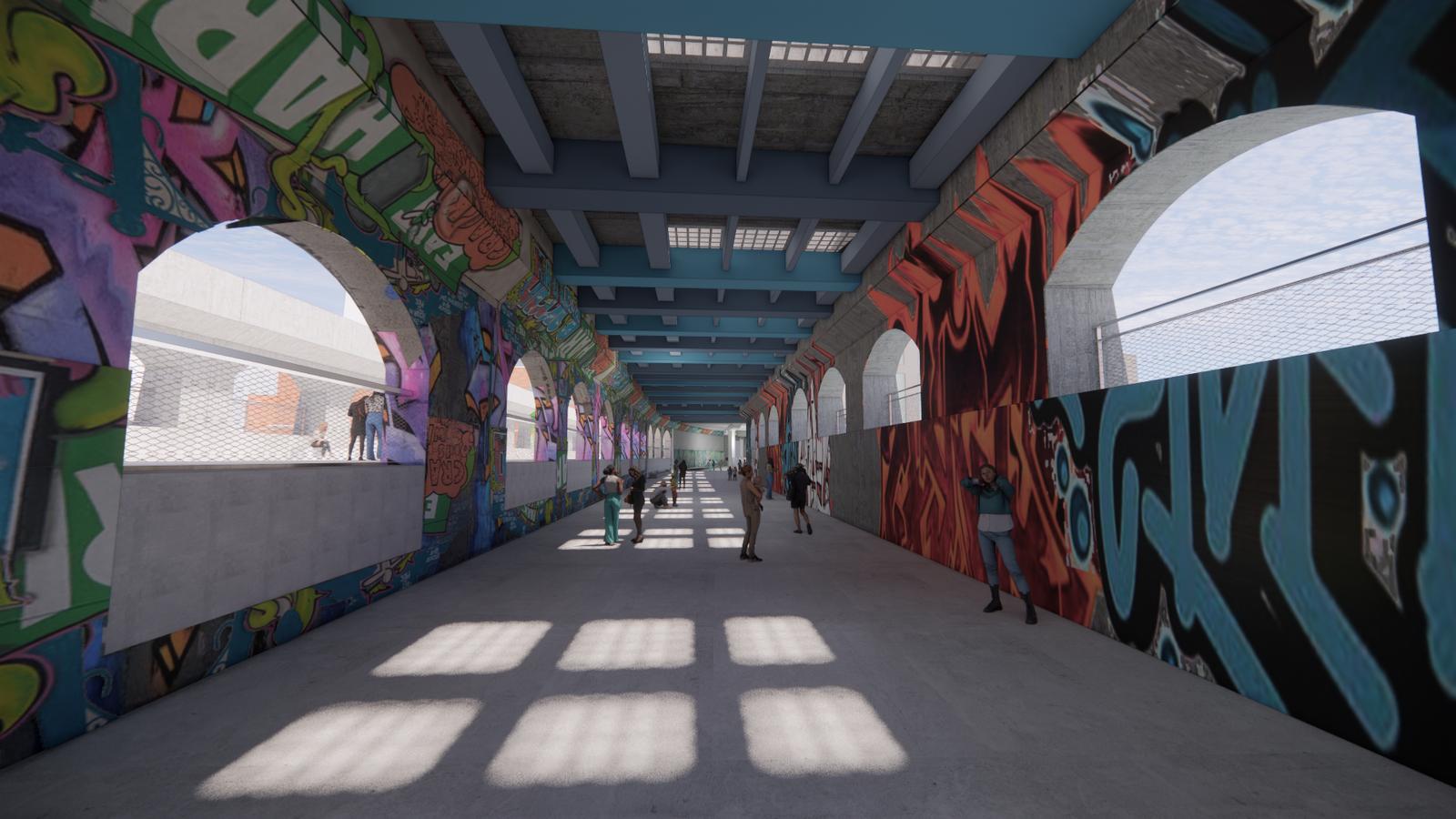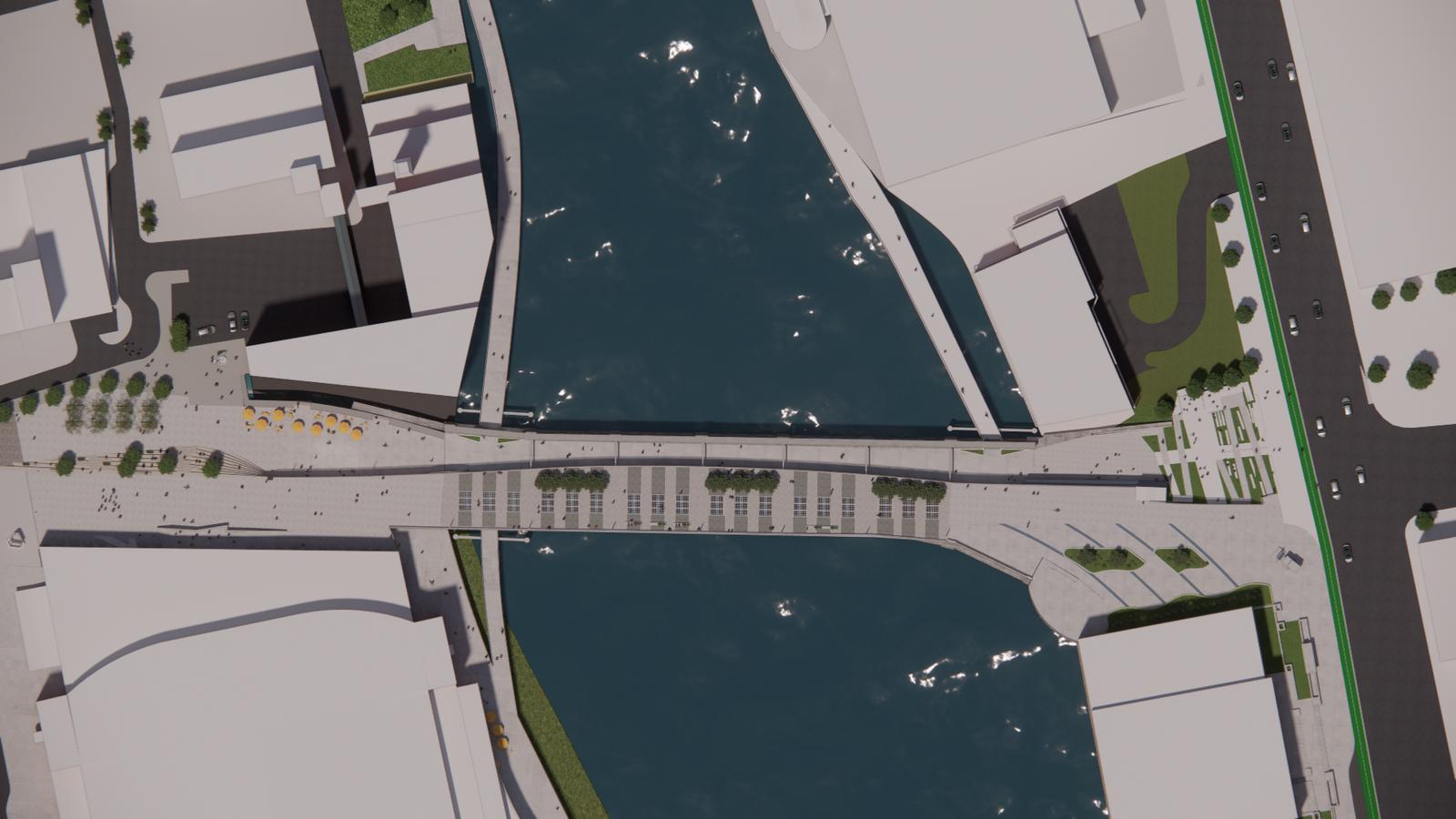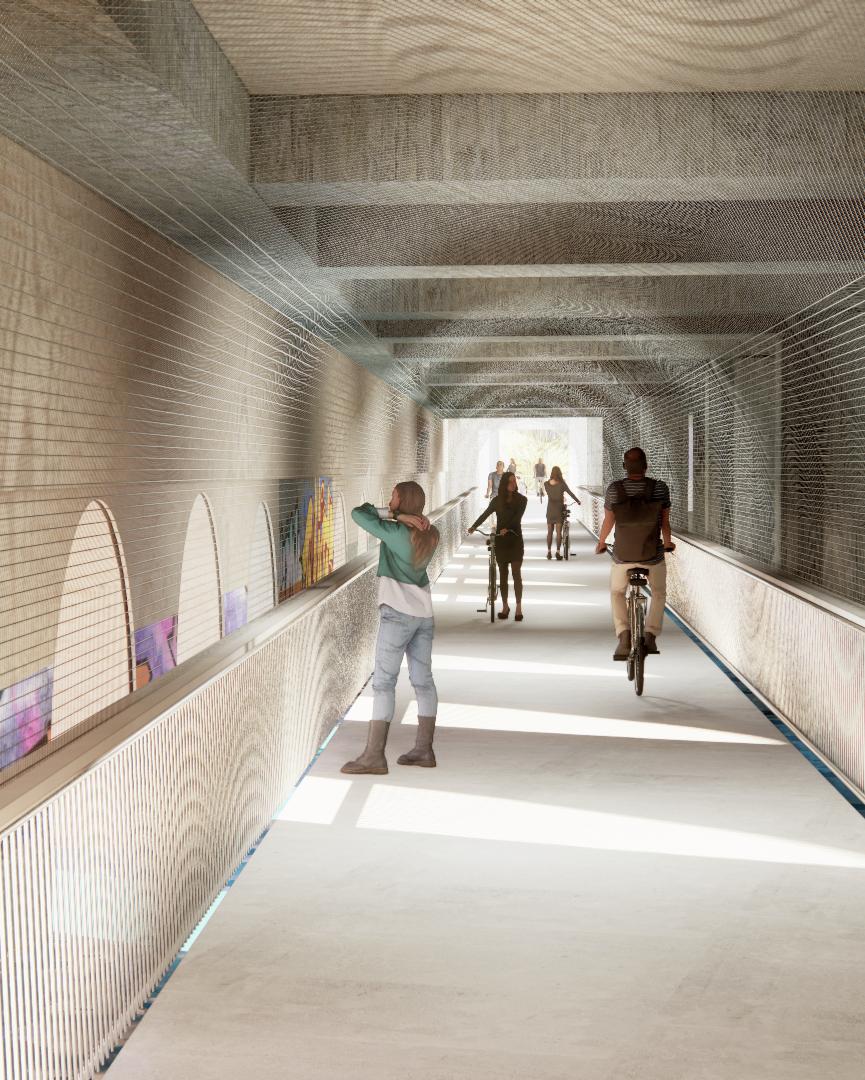Our plan, developed alongside Urban AC and Colliers Engineering & Design, peels away the Broad Street Bridge and decades of automotive infrastructure to reveal the historic Erie Canal Aqueduct beneath. This transformation creates an iconic downtown park highlighting Rochester's cultural history, including the site of the trolly subway which ran on the abandoned Erie Canal and celebrated graffiti that lined its walls.
An adaptation of the old Erie Canal; what creativity, ingenuity, determination, and foresight it must have taken to construct. Then to be overshadowed by the conflict and heartbreak of its eventual decline, abandonment, and conversion into a highway.

Aerial rendering of the aqueduct.
The project faced the delicate balancing act of preserving layers of industrial heritage—including the celebrated graffiti—while creating a contemporary public space that reconnects Rochester's downtown with its riverfront.

A rendering of the aqueduct interior shows the existing graffiti.
We approach the aqueduct through six conceptual lenses—Natural World, Wellness, Connectivity, Economy & Technology, Culture & Community, and Urban Evolution. By removing the bridge's upper deck, the plan reveals the historic aqueduct structure below, transforming it into a linear park with pedestrian promenades and cycling paths. The space is conceived as both a destination and vital link in the city's urban fabric, offering green spaces for respite and flexible areas for cultural programming.

Rendering of the aerial view of a reimagined aqueduct with pedestrian promenades, green spaces, and a river crossing.

Dynamic walkways connect urban spaces, showcasing the Erie Canal aqueduct’s layered design evolution.

A reimagined aqueduct corridor blends historic arches with contemporary materials and vibrant pathways.
The Aqueduct Reimagined project followed a true collaborative approach. We also built consensus with officials and, most importantly, the residents of Rochester. Workshops, design reviews, digital tools, and ongoing feedback ensure that community input shapes the design. Each phase includes those who will use the space, empowering them to create a place that truly belongs to them.

Terraced plazas connect pedestrians and cyclists, integrating green space with Rochester’s urban core.
Through Aqueduct Reimagined, we will turn the historic structure nto an essential public space, drawing residents and visitors to the riverfront, making it pedestrian-friendly, boosting surrounding businesses, and reconnecting the community with Rochester's history.

A rendering of the plaza at dusk.
“The Genesee River and Erie Canal are at the spiritual and physical center of our downtown. This Aqueduct Reimagined project will create new gathering spaces, new pathways along the river, and will change the way people live, work and play downtown.
”— Adam Bello, county executive, Rochester
Keywords
- Mobility
- Streets
- Resiliency
Type
- Infrastructure
- Waterfronts
Client
- City of Rochester